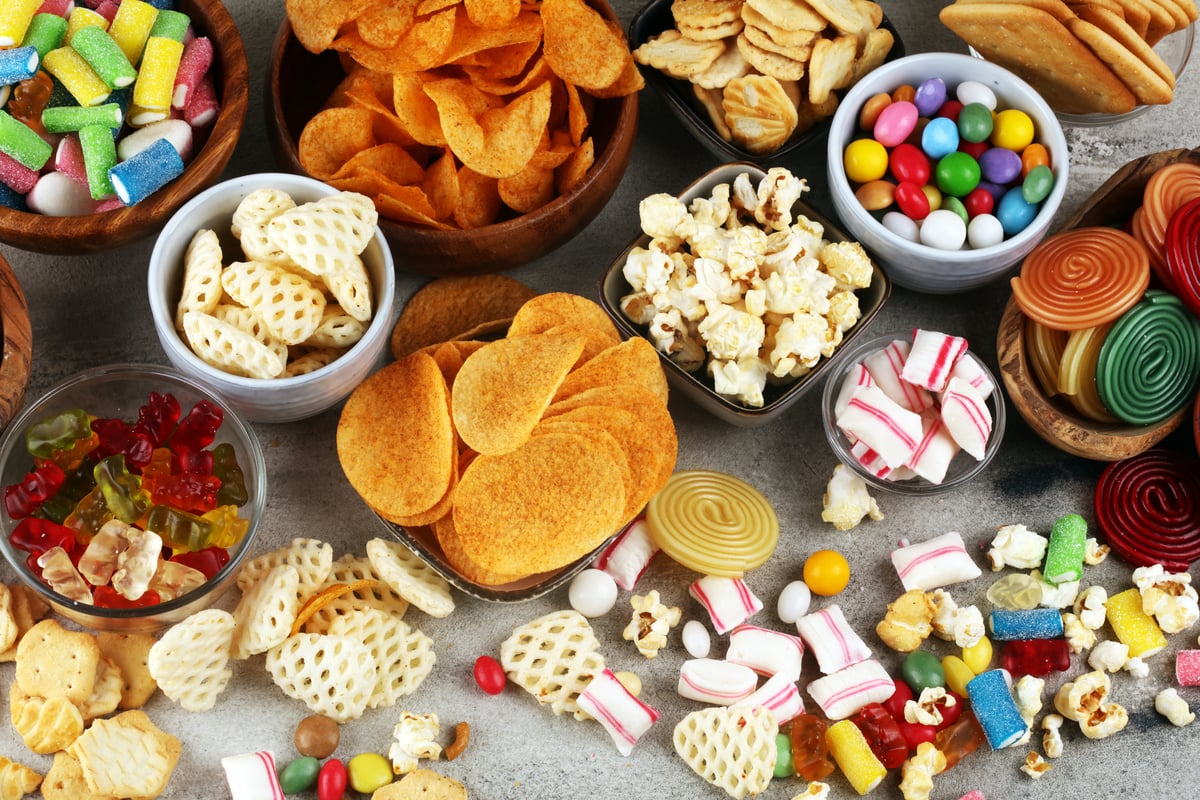Weight-loss drugs spur debate and open new doors for CU Anschutz researcher studying food/brain relationship
Occasionally indulging in a cupcake or handful of potato chips at a backyard barbecue doesn't make someone a junk-food junkie any more than having a beer at a party makes a person an alcoholic.
But what if cravings for a sweet or salty snack override all impulse control and trigger a cycle of mindless overeating? What if thoughts of food invade a person's brain so relentlessly, it drives an urge to eat that overcomes any fear of consequences?
Does that make a person a food addict?
It's a question generating increased debate with the rise in new drugs for weight loss. People taking GLP-1 receptor agonists such as semaglutide (Ozempic, Wegovy) report that cravings cease, "food noise" disappears and - more mysteriously - alcohol and other addictive-like behaviors lose their appeal.
"We're seeing many interesting parallels with GLP-1 agonist effects on eating behaviors and substance use," said Kristina Legget, PhD, an associate professor of psychiatry at the University of Colorado School of Medicine who co-directs the Colorado Neuroscience of Behavioral Health and Wellness Research Group.
GLP-1, or glucagon-like peptide-1, is a natural hormone the body uses to control appetite, digestion and blood sugar that GLP-1 agonist drugs mimic.
This article is part of a CU Anschutz Newsroom series exploring addiction, a serious public health issue our doctors and researchers are working hard to address.
"You might be taking them to reduce diabetes risk or for obesity, but then you suddenly notice that you're not drinking as much. That glass of wine you used to want in the evening, you're just kind of not feeling it anymore. It seems like they're targeting appetitive behaviors across the board," said Legget, a researcher who studies the brain/food relationship.
Exploring similar behaviors and brain pathways between food and substance use disorders can help answer the food-addiction question. But more importantly, Legget said, such research can inform disordered eating and substance use studies, potentially leading to improved therapies for both issues.
As with other addictions, genetics are likely at play

Although food addiction is not an official medical or psychiatric diagnosis, studies have found neurobiological and behavioral similarities between substance use and overeating.
"There's a lot of overlap between behaviors that patients report, such as loss of control over intake, intense cravings, inability to cut down and continuing the behavior despite negative consequences (such as eating high-fat, high-sodium foods despite an elevated cardiovascular disease risk)," Legget said. Other similarities include altered dopamine expression, preoccupation with a substance ("food noise") and relapse and withdrawal.
As with drug and alcohol addiction, genetics likely play a role in unhealthy relationships with food.
"There are some people who can walk into a room where there are cupcakes on the table, and they're like: no big deal. And then for another person, just because of the way they're wired, those cupcakes are all they can see. It's not as simple as: Well, just don't eat that."
In her lab, researchers compare brain images of volunteers prone to and not prone to obesity using various images and scenarios. "And we've seen differences in reward and impulsivity-related areas of the brain."
One experiment involves comparing brain images of volunteers after they have fasted and after they have eaten a meal.
"Normally, we'll see people are less jazzed about food pictures when they've eaten." But that's not the case with those prone to obesity, Legget said. "We don't really see that tamping down when they have eaten."
Are our bodies wired for addictive-like junk foods?

Because food is necessary for survival, evolution is also likely a piece in the complex puzzle of eating disorders and food addiction.
"In prehistoric times, you would survive only if you were able to find and consume a lot of high-calorie foods that would keep you going until you found the next meal," Legget said.
But now, food is easy to find, and the cheapest, most convenient options? Sugar- and fat-laden processed foods: the cookies, chips, crackers and cereals that overpopulate the middle aisles of the grocery store.
"Those are the foods we are wired to eat. And our bodies have just not caught up to the fact that that's not advantageous in this environment." Worse, the way processed foods are manufactured aligns well with an addiction framework, Legget said.
"You take a naturally derived substance (sugar, salt, fat) and then you process it in a way that makes it faster to deliver at higher doses."
Researchers have studied the effects of food additives on the brain, searching for the main culprit behind the pull of these factory-made packaged foods. The current prevailing consensus is that it's both sugar and fat - these synthesized combinations of refined carbs and fats not found in nature -that can be irresistible, Legget said.
"Fruit is going to be high in carbs, and nuts are going to be high in fats, but you don't naturally see things that combine those both into that super-yummy, hyper-palatable form that is ice cream."
Some studies suggest that separate reward pathways in the brain are ignited, one for fats and one for sugar, that then join together for a double-whammy.
Can disgusting images ruin people's appetites for good?
What is it, beyond being lucky on the genetic front, that reduces the power of those reward pathways for people who can take or leave these manufactured foods? It's a question Legget's lab works to answer through brain imaging.
"We see what's going on in the brain when you're looking at pictures of yummy foods versus neutral or low-calorie foods. Then we see how that changes when you lose weight. How does it change with exercise? With diet? And how does that differ with different weight groups?"
For those volunteers who are prone to obesity, whose brains show a robust response to pictures of food regardless of when they last ate, Legget suspects their satiety mechanisms are disrupted. "Whether that comes beforehand if you're prone to obesity or if it's related to obesity, we don't yet know," she said.
Over 40% of U.S. adults are clinically obese. Combined with adult Americans who are overweight, the rate surpasses 74%. - Centers for Disease Control and Prevention
"But we have seen changes in those same circuits when people lose weight, either through diet or through exercise." Her team is working to unravel what it is specifically about diet and about exercise that can change those reward pathways.
Taking a cognitive behavioral approach, the researchers are also using subliminal food imagery as a form of therapy to try to reduce the lure of food for those prone to overeating.
"We walk through the world, and everything is telling us: Eat this. Eat that. Look how yummy," Legget said. In response, her team pairs pictures of "yummy" foods with "disgusting" images (that flash too quickly for conscious awareness) in hopes of creating a conditioned response. Early data suggest it can work.
"We've seen both behaviorally and in the scanner that there's a tamping down of response to yummy foods when people do that paradigm versus a control group. We've seen differences in those circuits."
GLP-1 drugs open new doors to finding elusive answers
Legget said she hasn't taken a side in the food addiction debate yet, but that her view is: "If it's useful in a certain context, then it can be a useful term." If patients believe they are food addicts, and it's helpful for them to put the onus on brain or processed-food chemistry, then, yes, they and their therapists could embrace the term, she said.
For her, the real question - and the one that drives her - is how can the medical profession better treat the issues that have dramatically changed the collective weight of Americans and made semaglutide a household word?
The GLP-1 drugs have opened new doors for researchers seeking those answers, Legget said.
"What is going on when people are losing weight with GLP-1 agonists? How are food reward pathways being affected? I think it's going to give us a lot of insight into what's going on in those pathways in the first place and what happens when we disrupt those pathways."
And that should propel her team closer to its goal, she said. "Getting a better handle on what's going on and how those factors relate can help us figure out what's the best way to individualize treatment for better success," she said. "It's going to be really exciting."
Peer support for disordered eating
Joining peer support groups can help people with food-related issues for a number of reasons, Legget said.
- Anytime someone is struggling with something, talking to people who truly understand is going to be helpful.
- Meeting regularly can also help with accountability.
- It can reduce stigma and make someone feel less alone to see they're not the only person struggling with the issue.
Visit: Overeaters Anonymous or Food Addicts Anonymous.






